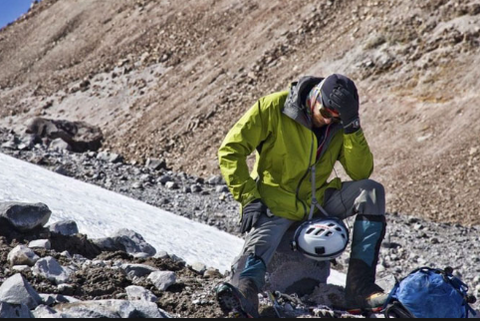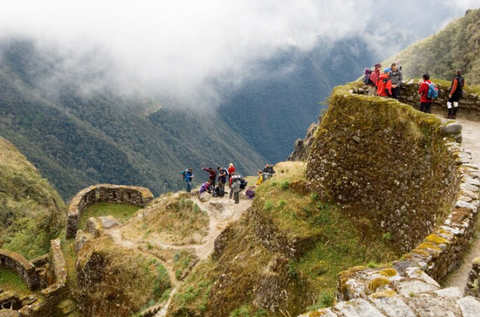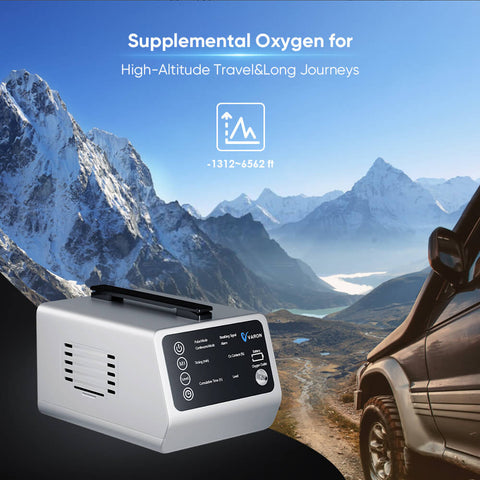Dreaming of an adventure to a breathtaking mountain destination? While the scenery may be awe-inspiring, the thinner air at high altitudes can present challenges for your body. This blog post will equip you with the knowledge to tackle oxygen concentration for high-altitude travel safely and comfortably, with a focus on the benefits of a portable oxygen for travel, like the Oxygenvip VT-1.
What is High Altitude and How it Affects Your Body

Before we delve into the effects of altitude, let's establish a common ground for what "high altitude" actually means. Altitude is essentially the distance between a point and sea level. As we climb higher, the air pressure decreases, and the amount of available oxygen diminishes. Here's a breakdown of altitude ranges and their potential impacts:
-
High Altitude (4,950 - 11,500ft or 1,500 - 3,000m): Travelers venturing into this zone may experience a noticeable decline in physical performance and an increase in breathing rate. Altitude sickness becomes more prevalent above 8,200ft (2,500m).
-
Very High Altitude (11,500 - 18,050ft or 3,500 - 5,500m): As the name suggests, this altitude range presents significant challenges. The risk of severe altitude sickness rises considerably, and oxygen deprivation (hypoxia) can occur.
-
Extreme Altitude (Above 18,050ft or 5,500m): The human body struggles to adapt (acclimatize) to extreme altitudes. Rapid ascent to these heights is extremely dangerous, and even those who are very fit can experience life-threatening complications.
Classification of Altitude Levels (AMS, HACE, HAPE) Diagnosis and Treatment
While altitude sickness can be a concern when traveling to high altitudes, understanding the different classifications and their treatments can help ensure a safe and enjoyable trip. Here's a breakdown of the three main categories:

1. Acute Mountain Sickness (AMS):
- Diagnosis: AMS is typically diagnosed based on symptoms and the individual's recent ascent to a higher altitude. There are scoring systems that consider factors like headache, nausea, dizziness, and fatigue to assess the severity of AMS.
- Treatment: The most effective treatment for AMS is descent to a lower altitude. Resting and staying hydrated are also crucial. Over-the-counter pain relievers like acetaminophen (consult your doctor first) can help manage headaches. In some cases, your doctor might prescribe medication like acetazolamide (Diamox) to help prevent or alleviate symptoms.
2. High-Altitude Cerebral Edema (HACE):
- Diagnosis: Diagnosing HACE can be more challenging than AMS. Doctors may consider a combination of factors including symptoms (confusion, disorientation, ataxia - difficulty walking), a physical examination, and possibly a neurological assessment.
- Treatment: HACE is a medical emergency. Immediate descent to a lower altitude is critical. Supplemental oxygen should be administered if available. In severe cases, medication and hospitalization might be necessary.
3. High-Altitude Pulmonary Edema (HAPE):
- Diagnosis: Similar to HACE, diagnosing HACE can involve a combination of symptoms (shortness of breath, cough, rapid breathing, chest tightness), a physical examination, and possibly chest X-rays.
- Treatment: HAPE is another medical emergency requiring immediate descent. Supplemental oxygen is crucial. Diuretics, medications that help remove fluid from the body, may be administered to reduce fluid buildup in the lungs. Hospitalization might be necessary for severe cases.
What Are the Symptoms of High Altitude Sickness?
Symptoms of AMS typically begin to appear at altitudes above 8,000 feet (2,438 meters) and can worsen the higher you climb. Common signs include:

- Headache
- Shortness of breath
- Fatigue
- Dizziness
- Nausea or vomiting
- Loss of appetite
- Difficulty sleeping
Risk Categories for Developing Acute Mountain Sickness (AMS)
Certain factors can increase your susceptibility to AMS, including:
- Rapid Ascent: Allowing your body time to acclimatize to the altitude is crucial. It's recommended to ascend gradually, taking rest days at higher elevations.
- Younger Age: Children and young adults tend to be more prone to AMS.
- Preexisting Medical Conditions: Certain respiratory or heart conditions can put you at higher risk. Consulting your doctor before traveling to high altitudes is essential.
- Dehydration: Drinking plenty of fluids helps your body absorb oxygen effectively.
The Advantage of Portable Oxygen for Travel for High Altitude
For individuals who require additional oxygen support at high altitudes, a portable oxygen for travel can be a game-changer. These oxygen concentrator for high altitude devices electronically concentrate the oxygen from the ambient air, providing a reliable source of supplemental oxygen.
Advantages of VT-1 for High Altitude and Travel
The Oxygenvip VT-1 portable oxygen for travel and high-altitude is specifically designed for travel and high-altitude use. Here's why it's a perfect companion for your high-altitude adventures:
- Lightweight and Portable: The VT-1 weighs only 5.29 lbs (2.3 kg), making it easy to carry and use on the go.
- Suitable for High Altitudes: The VT-1 provides supplemental oxygen up to an altitude of 6,562 feet (2,000 meters).
- Dual Oxygen Delivery Modes: Choose between continuous flow and pulse mode to optimize oxygen delivery based on your needs and battery life.
- Car Charger Compatibility: The VT-1 connects directly to your car's cigarette lighter for convenient portable oxygen for travel.
- Easy to Operate: The user-friendly interface with a large touchscreen makes operating the VT-1 simple, even at high altitudes.
Reminder for Preexisting Medical Conditions When Traveling to High Altitudes
If you have any pre-existing medical conditions, especially respiratory or heart problems, consulting with your doctor before traveling to high altitudes is essential. They can advise you on the safety of your trip.

Here are some additional tips for traveling safely at high altitudes:
- Ascend gradually. It's important to give your body time to adjust to the decreasing oxygen levels at high altitudes. Aim to ascend no more than 1,000 feet (305 meters) per night.
- Stay hydrated. Drink plenty of fluids, even if you don't feel thirsty. Dehydration can worsen altitude sickness symptoms.
- Listen to your body. If you start to experience symptoms of altitude sickness, such as headache, shortness of breath, fatigue, dizziness, nausea, or vomiting, stop ascending and descend to a lower altitude.
- Consider taking medication. There are medications that can help prevent or alleviate altitude sickness symptoms. Talk to your doctor about whether medication is right for you.
If you experience any serious symptoms of altitude sickness, such as confusion, disorientation, or difficulty breathing, seek medical attention immediately.
Conclusion: Breathe Easy with a Portable Oxygen Concentrator for High Altitude
With careful planning and preparation, you can experience the wonders of high-altitude destinations without letting altitude sickness hold you back. Consider incorporating a portable oxygen concentrator like the Oxygenvip VT-1 into your travel gear if you require oxygen concentration for high-altitude. This can give you the peace of mind to breathe easy and enjoy your high-altitude adventure to the fullest.
Ready to conquer those mountain peaks? Visit the Oxygenvip website to learn more about the VT-1 portable oxygen concentrator for travel and how it can empower your high-altitude travels!


















